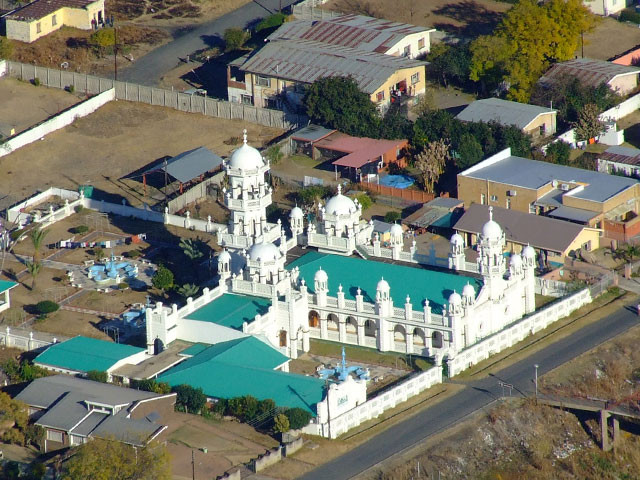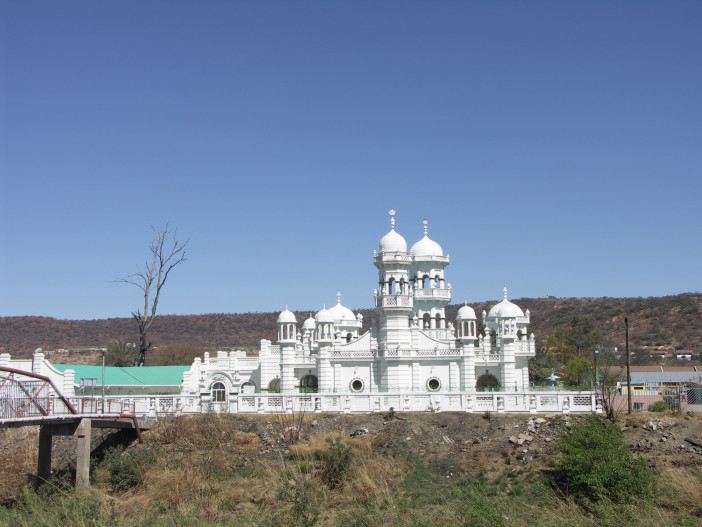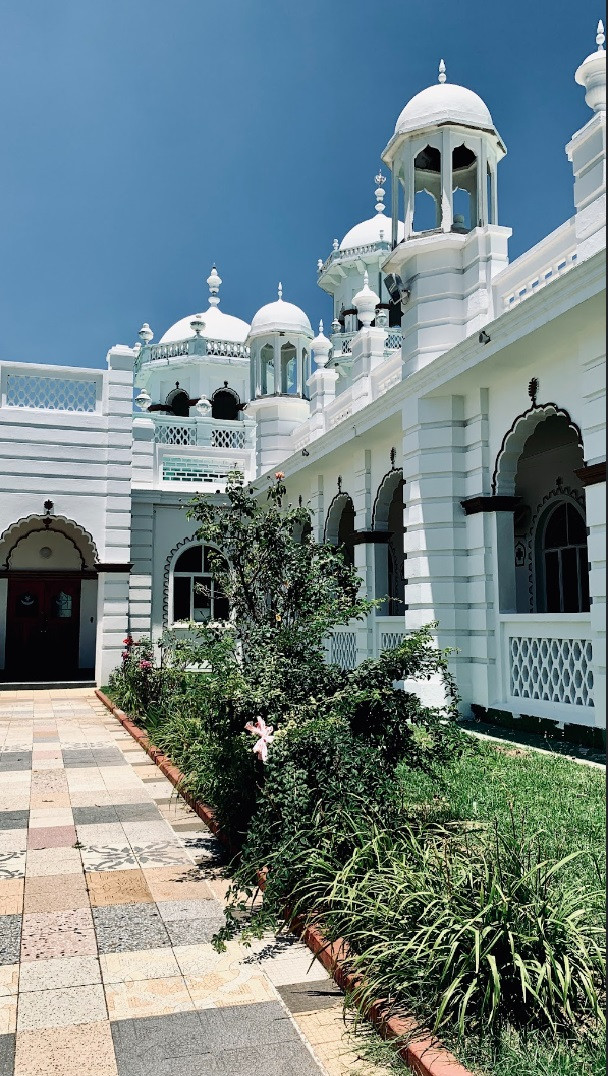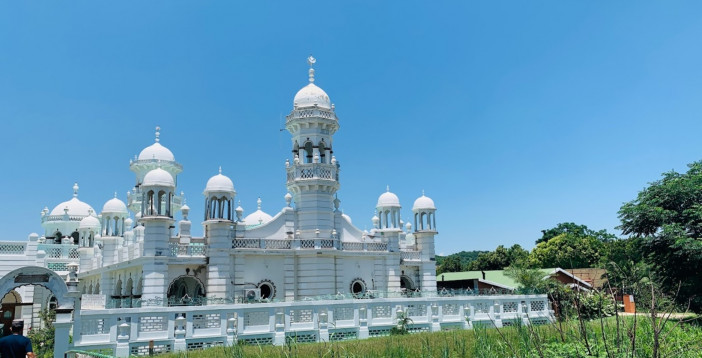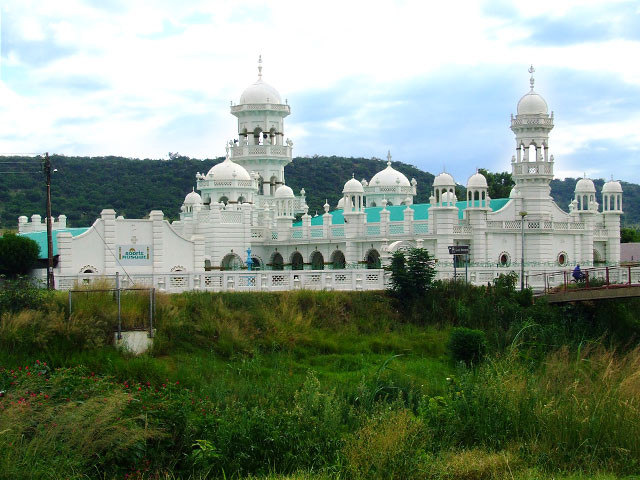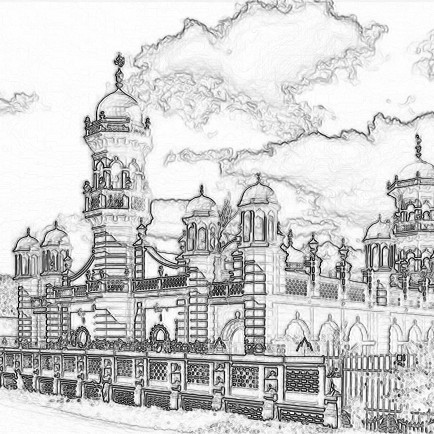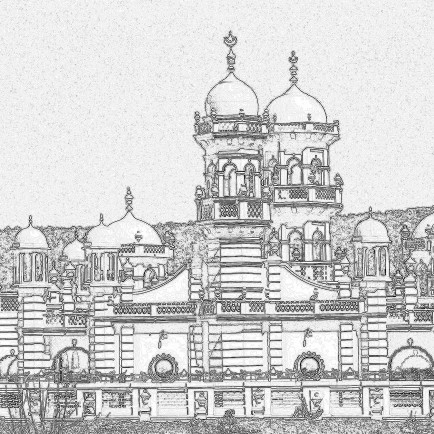Soofie Mosque Ladysmith
History
Locally known as the Soofie Masjid (mosque), the magnificent religious monument's beginnings can be traced to the 1895 arrival in South Africa of Hadrat (sometimes spelled Hazrath) Soofie Saheb, a revered Muslim mystic. He set out on a 15-year journey to construct as many as 12 mosques along Durban's eastern interior shore.
Hazrath Soofie Saheb would have arrived between the original construction of the Soofie Mosque and his passing in 1910. Jamaloodeen, a great builder, took it on in the 1960s and viewed it as his personal duty to repair the mosque as a respect to the beloved architect of the building.
Jamaloodeen allegedly merely drew daily sketches in the sand outside the mosque to design and rebuild the magnificent structure, which is now far larger than when it was first constructed.
Urban and Architectural
Recantular shaped plan, decorated with multiple minarets inspired from the Moghul Architecture. The property includes the main prayer hall, women's prayer section and ablutions. there are one large minaret, along with 3 medium sized and finally 12 small minarets ornamenting the facility. the building has an extended area of a garden that hosts events along with a multi-purpose hall as an annex.
Description
The mihrab, a semicircular niche in the mosque wall that denotes the direction of the Kaaba in Mecca and the direction in which Muslims gaze when they pray, is one of the most noticeable features of the original structure to have survived.
References
https://www.sa-venues.com/things-to-do/kwazulunatal/soofie-mosque/
https://www.battlefieldsroute.co.za/place/soofi-mosque/
Details
Location
Soofie Masjid, Ladysmith, 3370, South Africa
Worshippers
350
Owners
Hazrath Soofie Saheb
Architect Name
Year of Build
1969
Area
650
Drawings
Map
History
Locally known as the Soofie Masjid (mosque), the magnificent religious monument's beginnings can be traced to the 1895 arrival in South Africa of Hadrat (sometimes spelled Hazrath) Soofie Saheb, a revered Muslim mystic. He set out on a 15-year journey to construct as many as 12 mosques along Durban's eastern interior shore.
Hazrath Soofie Saheb would have arrived between the original construction of the Soofie Mosque and his passing in 1910. Jamaloodeen, a great builder, took it on in the 1960s and viewed it as his personal duty to repair the mosque as a respect to the beloved architect of the building.
Jamaloodeen allegedly merely drew daily sketches in the sand outside the mosque to design and rebuild the magnificent structure, which is now far larger than when it was first constructed.
Urban and Architectural
Recantular shaped plan, decorated with multiple minarets inspired from the Moghul Architecture. The property includes the main prayer hall, women's prayer section and ablutions. there are one large minaret, along with 3 medium sized and finally 12 small minarets ornamenting the facility. the building has an extended area of a garden that hosts events along with a multi-purpose hall as an annex.
Description
The mihrab, a semicircular niche in the mosque wall that denotes the direction of the Kaaba in Mecca and the direction in which Muslims gaze when they pray, is one of the most noticeable features of the original structure to have survived.


